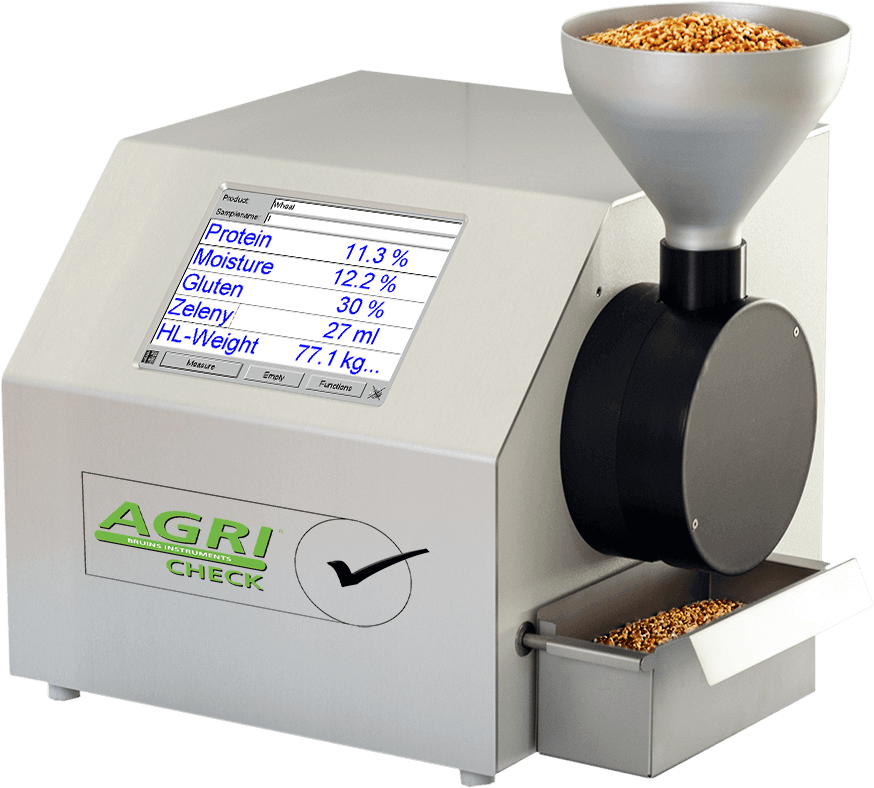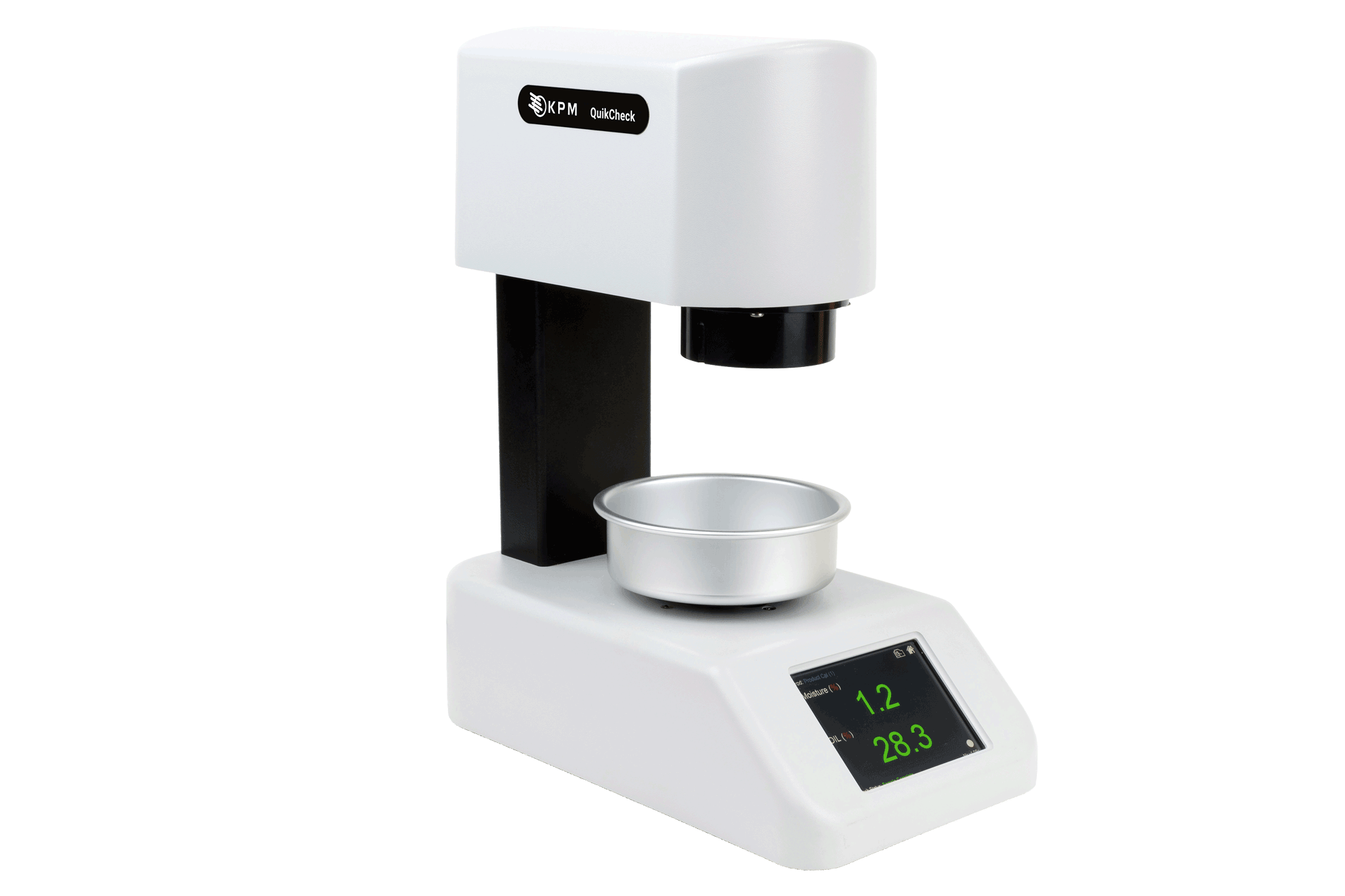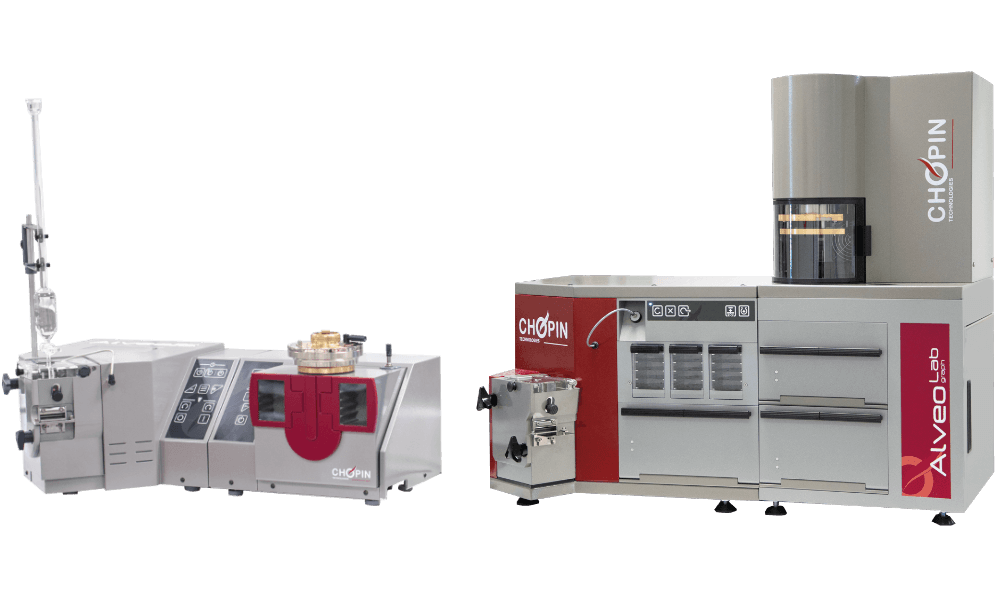Analysis of Bagels

Quality Control Solutions for Bagel Production
With our cutting-edge technology, you can use Near Infrared (NIR) analysis to monitor incoming ingredients, analyze functional and rheological properties of flour and dough, and inspect every cooked bagel for size, shape, and color conformity.

NIR Analysis of Recipe Ingredients
NIR technologies can be used, either in the QA lab or at-line, to analyze a full spectrum of moisture & compositional characteristics of flours used to craft exceptional bagels. Many calibrations exist for a variety of dry and wet ingredients to help bakers control quality parameters which can significantly impact the final product.
Ingredients Analyzed
Ingredients Analyzed
NIR has become a popular and widespread analytical technique for the analysis of food and agricultural products. NIR is a region of the electromagnetic spectrum that has unique properties which make it very useful for characterizing materials. This area of the electromagnetic spectrum has the best combination of attributes for the analysis of most solid, slurry and liquid samples.
Flour
Specification compliance, quality control, cost control, recipe development, brand protection
Ash, gluten, moisture, starch, protein
Supplier's location, incoming ingredients, lab
Wheat flours, corn flour, spelt flour, buckwheat flour, rice flour, rye flour, gluten-free flours
Corn Meal
Specification compliance, quality control, cost control, recipe development, brand protection
Moisture
Supplier's location, incoming ingredients, lab
All types
Fat/Oil
Specification compliance, quality control, cost control, recipe development, brand protection
Fat/oil
Supplier's location, incoming ingredients, lab, online
All types
Finished Product - Baked Goods
Specification compliance, quality control, cost control, recipe development, brand protection
Moisture
At-line, lab, Online
Dry Yeast
Specification compliance, quality control, cost control, recipe development, brand protection
Moisture
Incoming ingredients, at-line, lab
All types


Functional and Rheological Properties
Dough analysis technologies from KPM provide fast, simple, and intuitive solutions to help bakers simulate the baking process and collect critical data on dough behavior based on specific baking parameters or products, without having to spend extra time or waste product.
Water Absorption
The amount of water that any flour can absorb increases with high levels of protein, damaged starch (particle size) or pentosans. It is very simple to measure water absorption directly using the KPM solutions outlined below.
Stickiness
This often occurs when starch damage or pentosan levels are too high and the protein levels are too low. Sticky dough causes process machine problems when dividing and pressing tortillas. Measure starch with the SDmatic 2, and protein levels with the SpectraStar XT-F NIR Analyzer.
Dough Consistency
Dough consistency changes during mixing, reflecting the formation of the gluten network. For any given level of hydration, the consistency of the dough represents its firmness. This depends, on the quantity and quality of the proteins, the level of starch damage, and the pentosans. Mixing consistency may be measured during mixing or after rolling. It is also possible to individually measure the factors responsible for consistency: proteins, damaged starch, and pentosans.
Extensibility
Extensibility is directly measured using the Alveolab or AlveoPC. During the deformation of the ball, it stretches to where it reaches its breaking point, mainly influenced by the quality of the protein network. This corresponds to the "L" or "G" value on the Alveograph. Read more about extensibility here.
Elasticity
It takes a certain level of elasticity for the dough to be machinable. If the elasticity is too low, the dough won’t hold shape; if it is too high, the dough will tend to retract, which impacts the appearance of the finished product. Elasticity is measured directly and exclusively with the Alveolab or AlveoPC.
Volume
The volume of baguette is primarily influenced by the volume of CO2 produced by the yeast during fermentation. This volume is measured directly by the Rheo F4. The amount of CO2 produced depends on the intrinsic activity of the yeast and also the amount of simple sugars available. The latter is directly influenced by the activity of the amylases present in or added to the flour, which degrade a portion of the starch into simple sugars, usable by the yeast. Damaged starch, measured by the SDmatic 2, is more easily attacked by amylases. It therefore positively impacts the volume.
The volume is also dependent on the quality of the gluten network, measured with the Alveolab, AlveoPC, and the Mixolab. This determines the ability of the dough to develop during fermentation, and to retain the CO2 produced, measured with the Rheo F4.
Color
Baguettes are judged more or less appetizing by consumers according to their color. This parameter is essentially governed by the Maillard reaction, occurring during baking, which relates to the action of sugars on proteins. The more free sugars, the darker the crust will be. The color, as with the volume, is related to amylase enzyme activity and indirectly with the level of damaged starch (SDmatic 2).
Starch Properties
After baking, the starch will tend to partially recrystallize. This phenomenon is called retrogradation and explains why the products become hard (stale). The beginning of retrogradation is very easily measured with the Mixolab. Damaged starch has the effect of reducing the speed of retrogradation, it is measured with the SDmatic 2.

Vision Inspection of Cooked Bagels
Vision system implementations allow manufactures to dramatically reduce the time required to perform scheduled QA checks and allows for important but previously ‘unmeasurable’ characteristics to be easily quantified and recorded (hole diameter, for example).
Product Types
- Plain bagel
- Bagel with topping or inclusions

Measurement Capability
- 2D Shape & Size (min/max/mean diameters, roundness/ovality)
- 3D/Height (peak height, volume, slope, predicted weight)
- Top Color (avg bake color with topping and hole areas ignored)
- Bottom Color (avg color, black spots, white edges, excessive cornmeal)
- Hole Conformity (hole area, min/max/mean hole diameter)
- Topping/Seeding (% coverage, distribution, voids)
Defects Detection Capability
- Misshapen products (deformed, bad joins, etc)
- Wrong size (e.g., too small, too tall, etc.)
- Spots (light, dark, foreign material on product surface)
- Topping defects (e.g., voids, improper coverage)
- Doubles/kissed bagels (overlapping or joined product)
- Underbaked edges on the bottom

Additional Reading



























